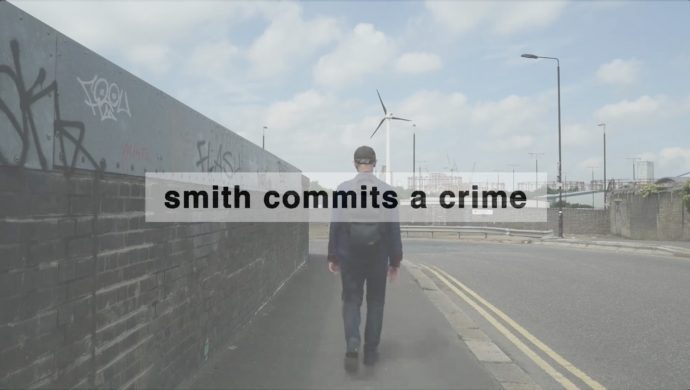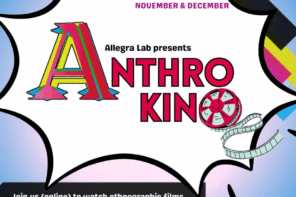Smith and Willing is a Paul Antick project. For more information about Smith and Willing, see: Smith & Willing
***
Hello, Allegra Lab editorial collective here. Have you watched the film? No? Then watch it before reading on. Have you watched it now? Good. Then we want to tell you about a new initiative at Allegra Lab. We are experimenting in publishing care reviews of multimodal work accompanying the pieces we publish. Why do we do this? Because multimodal scholarship should also be reviewed, but we also recognise that different modes of scholarship require different types of review. So this is what we’re trying, and here is the review:
The 21 st -century flaneur as a suspect?
by Juli Székely
Smith commits a crime is a tale of an everyday man trying to find his way – not in life, but – in space. This space looks essentially urban (the film begins with the image of an urban (re)development site and ends with a scene showing an office building complex), but open roads and nature also make their appearances. Within these locations, with a pleasant minimalist approach, we observe Smith mainly walking. However, during the 28-minutes-long film he occasionally also makes a few breaks: he sometimes stops for looking around, touching surfaces and checking found objects. For a while, it is as if Smith was looking for the “right” spot, which impression also becomes underlined when, at around twelve minutes into the film, he does a graffiti: “Smith commits a crime”. But does this self-referential joke indeed refer to the crime in question? On the one hand, this text melts into the many other – legal and illegal – messages Smith discovers during his journey, such as graffitis, advertisements and warnings, but on the other, it also seems to have a much more profound implication for the walking practices of Smith in general.
In contrast to Walter Benjamin’s figure of the flaneur who strolls within the strange and unfamiliar settings of the modern city, here Smith finds himself in late capitalism repeatedly bumping into fences, locks and caution signs. He gets involved in absurd and annoying situations, and although the scenes sometimes feel a bit repetitive (especially in the second half of the film), we also sense the absurdity and annoyance mediated through these barriers. Smith’ experiences of (closed-off) space are often carefully reinforced by the various elements of his surroundings: while a roundabout sign almost ridicules his act of going in circles (is he lost?), the cemetery literally stands for reaching the end of a road (is there indeed a danger of death as one of the signs later suggests?). From this perspective, Smith seems to maneuver within a labyrinth of permissions and (rather) prohibitions, which he inevitably breaks. We are only at the 30th second of the film, when Smith climbs over a bridge, but soon enough we also witness him taking undesignated routes and ignoring caution signs. Walking – as Michel de Certeau argued in The Practice of Everyday Life – becomes an act of resistance (the ultimate crime?) challenging the spatial order inscribed on the city by larger power structures.
These actions are carefully recorded by the camera, which much like a CCTV, always shows Smith from a fixed angle. The film, thus, consists of the various recordings of this “surveillance” camera, which at certain points are interspersed with a black screen (although its function is not very clear). Nevertheless, for a moment, the camera becomes also unveiled when we see its image on the glass surface of a building, with Smith standing behind it. Does Smith hold a mirror in front of surveillance society?
All in all, Smith commits a crime is a story about the connection between space, power and resistance, from which perspective, the road sign of “passing place” simultaneously refers to the necessity and impossibility to truly discover these strange sites of the 21st century without breaking rules.
Juli Székely has an academic background in literature, art history and sociology. Currently she is an assistant professor at the Department of Sociology at ELTE in Budapest. Her research interests lie primarily in the relationship of art and city, with a special emphasis on public art, (in)tangible heritage and memory politics in urban space.









